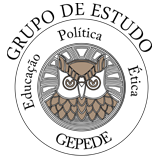

RESUMO: Apresentaremos uma análise sobre a forma dialógica presente em Behemoth e Physical Dialogue ofthenatureoftheairde Thomas Hobbes, bem como três de suas temáticas, a saber: a sedição, a arte da retórica e o método científico. O diálogo é uma forma que nos remete diretamente a Platão, e é a partir de uma premissa platónica sobre a arte de dialogar, presente nos dois diálogos hobbesianos, que se baseia este estudo. Em BehemothHobbes assinala a ação dos sedutores e seu uso perspicaz da linguagem para fomentar a sedição. No Diálogo Físico sobre a Natureza do Ar Hobbes dedica uma atenção especial para a descrição eficaz do experimento científico. Em ambos, o filósofo nos mostra como são suficientemente tendenciosos os sedutores e os que descrevem os experimentos por não possuírem axiomas bem definidos, gerando o espaço necessário para a manipulação da linguagem em favor de quem a pronuncia, bem como facções dentro do corpo político. Após este trajeto, encontraremos uma reflexão acerca da presença da arte retórica no método científico hobbesiano, criticando a tese de Quentin Skinner sobre o papel da eloquência em Hobbes.
PALAVRAS CHAVE: Thomas Hobbes, diálogo, ciencia experimental, sedição, retórica.
ABSTRACT: We will present an analysis about the dialogic form in Behemoth and Physical Dialogue of the nature of the air of Thomas Hobbes, as well as three of his themes: sedition, the art of rhetoric and the scientific method. The dialogue is a form that leads directly to Plato, and is from a Platonic premise about the art of to discuss, present in both Hobbesian dialogues, which is based the present study. In Behemoth Hobbes points out the action of the seducers and his insightful use of language to foment sedition. In Physical Dialogue of the nature of the air Hobbes pays special attention to the effective description of the scientific experiment. In both, the philosopher shows us how are sufficiently biased the seducers and those who describe the experiments because they lack well-defined axioms, creating the necessary space for the manipulation of language in favor of those who speaking about it and generating the factions within the political body. After this path, we will do a reflection on the presence of rhetoric art in the Hobbesian scientific method, criticizing Quentin Skinner’s thesis on the role of eloquence in Hobbes.
KEY WORDS: Thomas Hobbes, dialogue, experimental science, sedition, rhetoric